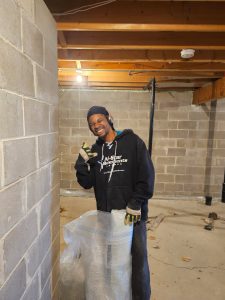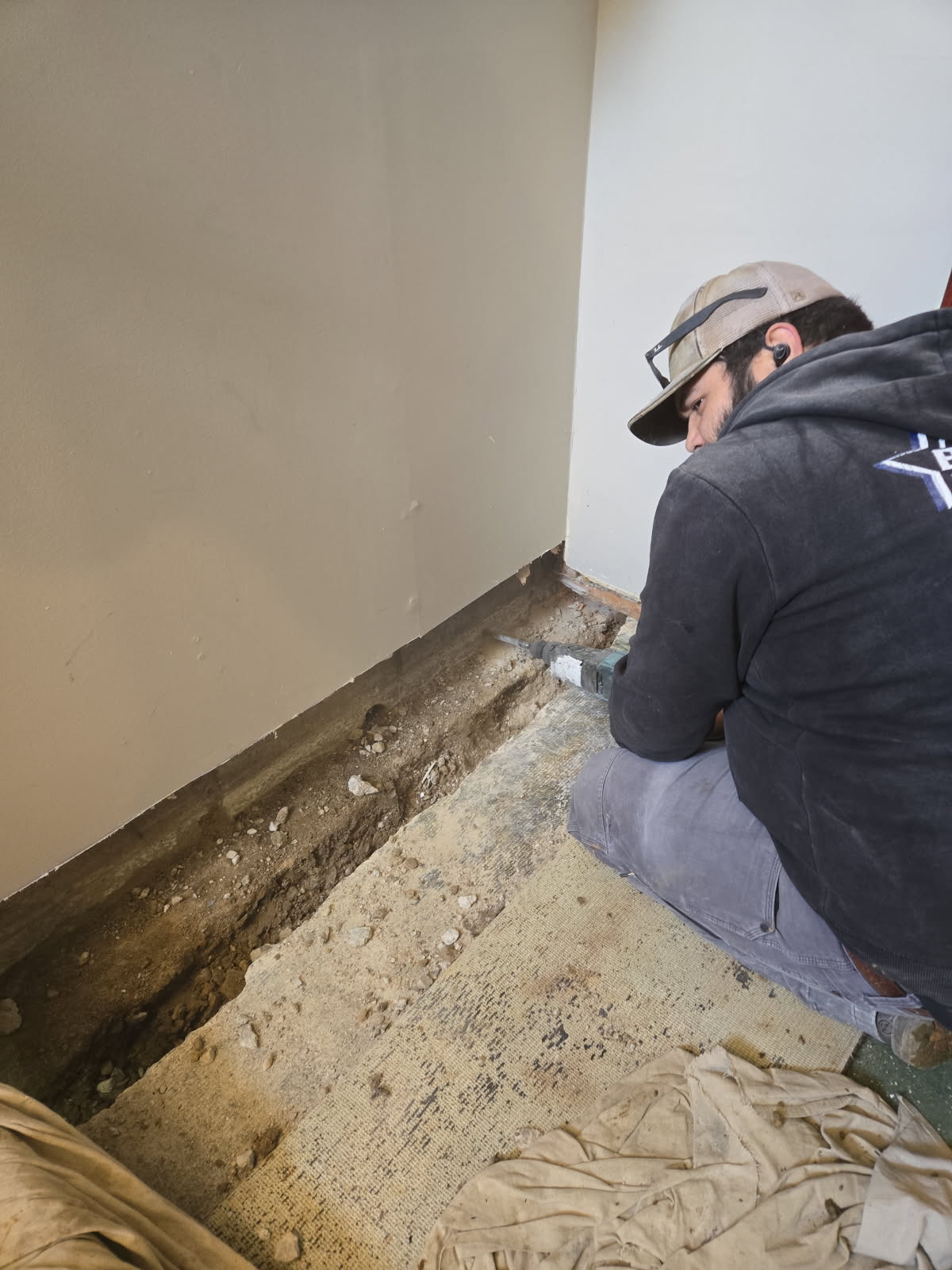Ever wondered why your basement seems to be a magnet for bugs and pests? It’s all about the moisture. By waterproofing your basement, you’re taking a huge step toward making your home less inviting to these unwanted visitors. Pests like cockroaches, termites, and beetles thrive in damp, humid conditions. By reducing moisture through effective waterproofing techniques, you’re disrupting their ideal habitat. But how exactly does this process work, and what other benefits might it offer for your home and health? Let’s explore this further.
Understanding Basement Waterproofing
Nearly every homeowner will grapple with basement waterproofing at some point. It’s a critical aspect of home maintenance that you can’t afford to ignore. Waterproofing is more than just stopping water from seeping into your basement. It’s about creating a barrier that protects your home’s infrastructure.
Several methods can be used in waterproofing. The most common is the application of a waterproof sealant on the walls and floor. It’s a simple DIY project if you’re handy, but professionals can also be engaged for guaranteed results.
Another method is installing a sump pump. It’s a bit more complex but highly effective. The pump collects and redirects excess water away from the house, preventing it from entering your basement.
Also, exterior waterproofing involves creating a drainage system around your home to guide water away from the foundation. It’s the most labor-intensive method, but it’s the most effective long-term solution.
Risks of a Damp Basement
Without a doubt, living with a damp basement can expose you to a multitude of risks. It’s not just about the unpleasant musty odor or the unsightly water stains.
You’re also looking at potential structural damage to your home, and health issues for you and your family.
Let’s talk about the structural issues first. Unchecked moisture can weaken the wooden structures in your basement over time, leading to rot and decay. This can compromise the integrity of your home, and repairs can be costly.
Then there’s the health aspect. Damp environments are perfect breeding grounds for mold and mildew. Exposure to these can lead to respiratory problems, allergies and other health issues. If you’ve got asthma or other respiratory conditions, a damp basement can exacerbate these problems.
And let’s not forget the impact on your belongings. Moisture can damage items stored in your basement, from important documents to cherished keepsakes.
It can also make your basement an unwelcome place to spend time.
The Connection Between Moisture and Pests
You may not realize it, but moisture in your basement isn’t just a structural issue—it’s a beacon for pests.
Bugs and other critters are attracted to dampness, making a wet basement the perfect breeding ground.
Understanding this link is essential for preventing a full-blown infestation.
Moisture Attracting Pests
In the domain of basement maintenance, understanding the connection between moisture and pests is essential. You see, many pests are attracted to damp environments as they provide the necessary conditions for their survival and reproduction.
Now, you might be wondering, “What pests are we talking about?” Well, the list is quite long, but it includes many insects like cockroaches, termites, and various types of beetles. These critters aren’t just a nuisance, but they also pose health risks and can damage your property.
The reason why these pests love damp environments is simple. Moisture aids in their life cycle. Many insects lay their eggs in water or damp areas, ensuring a safe and nourishing environment for their offspring.
Moreover, moisture often leads to the growth of mold and mildew, which are food sources for many pests.
Basement Dampness and Bugs
Countless homeowners have discovered a direct correlation between basement dampness and the presence of bugs. When you’ve got a damp basement, it’s like you’re sending out an open invitation to all sorts of critters. Bugs are naturally drawn to moist environments because they provide a perfect breeding ground.
Moisture creates the ideal conditions for pests to thrive, including higher humidity levels and damp, rotting materials to feed on.
Take, for instance, the common house centipede. This creepy crawler loves to hang out in damp basements, where it has access to plenty of other smaller bugs to eat.
And termites? They’re notorious for being attracted to damp wood, which your wet basement might just be providing.
But it’s not just about the bugs that you can see. Many pests, like mold mites and booklice, thrive in damp environments and are so tiny that you mightn’t even notice them until there’s a full-blown infestation.
Even if you don’t see them, they could be there, damaging your home and potentially causing health issues.
Understanding the connection between basement dampness and pests is the first step towards taking action. By addressing the moisture problem, you’re putting up a barrier against these unwanted guests.
Preventing Pest Infestation
Let’s explore the heart of the matter – preventing pest infestation by understanding the link between moisture and pests.
You see, many pests are attracted to moist areas, as they offer ideal conditions for their survival and reproduction. Think of your damp basement as a five-star hotel for bugs! Now, you’re catching on.
That’s where basement waterproofing comes into play. By keeping your basement dry, you’re fundamentally closing the doors of that bug hotel. The less moisture in your basement, the fewer pests you’ll have to deal with. It’s simple math.
Don’t underestimate the role that excess moisture plays in attracting pests. From termites and cockroaches to rodents and spiders, these unwanted guests thrive in damp environments.
And, they can cause significant damage to your home and even pose a risk to your health.
Basement waterproofing isn’t just about preventing water damage. It’s also a proactive measure to keep pests at bay.
So don’t wait for the infestation to happen. Take action. Waterproof your basement and kick those pests to the curb.
Waterproofing Methods for Pest Control
Sealing your basement can be an effective method to deter pests. When you waterproof your basement, you’re fundamentally creating a barrier that pests can’t penetrate. This doesn’t just keep water out—it also blocks the tiny crevices and cracks that pests use to gain entry.
There are several waterproofing methods you can employ. One of the most common is the application of a waterproofing sealant. This can be done on the interior or exterior of your basement’s walls. The sealant works by filling in the porous surface of the concrete, creating a smooth, impenetrable layer.
Another method is the installation of a drainage system. This typically involves digging a trench around the perimeter of your basement, placing a drain pipe in the trench, and then covering it back up. The pipe diverts water away from your basement, keeping it dry and less attractive to pests.
One more method is the use of a sump pump. This device pumps out any water that collects in your basement, preventing it from becoming a breeding ground for pests.
Each method has its own advantages, and it’s important to choose the one that best fits your needs.
Benefits of a Dry Basement Environment
You’ll find that a dry basement environment isn’t just comfortable, it’s beneficial in several essential ways.
Reducing moisture impedes mold growth, ensuring a healthier and fresher home.
It’s also a key factor in deterring pests, as they’re attracted to damp spaces and can considerably depreciate your property value if left unchecked.
Reducing Moisture and Mold
Condensation issues and damp walls in your basement breed a fertile environment for moisture and mold. This dampness can result in severe structural damage to your home, decrease its value, and create a health hazard for you and your family.
By waterproofing your basement, you’re actively reducing the level of moisture, in turn, decreasing the likelihood for mold to grow. Mold thrives in damp, dark areas and eliminating these conditions can halt its growth. It’s not just about protecting your home’s structure, it’s about creating a healthier living environment.
A dry basement environment is also beneficial in preventing pest infestations. Many pests, such as cockroaches, termites, and certain species of ants, are attracted to damp areas. By removing this attraction, you’re providing less opportunity for pests to make your basement their new home.
Moreover, a dry basement can help reduce energy costs. Moist air requires more energy to heat or cool, and by reducing the moisture, you’re making your home more energy-efficient.
Pest Infestation Prevention
Continuing from where we left off, a dry basement environment offers substantial benefits when it comes to pest infestation prevention.
You see, pests, like termites, beetles, cockroaches, and rodents, thrive in damp, humid conditions. They’re attracted to water and the rotting wood it causes, using it as both a source of nourishment and a breeding ground.
When your basement is waterproofed, it becomes a hostile environment for these unwanted guests. They simply can’t survive without the moisture they need. The dry conditions hinder their ability to breed and multiply, effectively curbing the infestation before it even begins.
Moreover, a dry basement discourages the growth of mold and mildew, which can also attract pests.
Mold is a feast for many insects and critters, so eliminating it from your basement is like taking away their food source.
Enhanced Property Value
Investing in basement waterproofing can greatly boost your property’s value, making it a wise financial move.
It’s not just about preventing the nuisance and potential damage of pests; it’s also about enhancing the overall health and appeal of your home. A dry, well-maintained basement is a strong selling point, showing potential buyers that you’ve taken steps to guarantee the longevity of your property.
Over time, unchecked moisture can cause significant structural damage, leading to costly repairs. Waterproofing your basement protects against these potential issues, increasing your home’s value.
Additionally, a dry basement offers additional living or storage space, another attractive feature for potential buyers.
Furthermore, basement waterproofing reduces energy costs by preventing the infiltration of cold and hot air, contributing to the energy efficiency of your home. This can be a big selling point for environmentally conscious buyers.
Case Study: Waterproofing Success Stories
Over the years, countless homeowners have turned their dank, leaky basements into dry, usable spaces through effective waterproofing solutions.
Let’s consider John, a homeowner from Michigan. He’d battled basement leaks for years, with dampness inviting a horde of pests, from spiders to rats. He tried various DIY methods, but none worked long-term.
That’s when he approached a professional waterproofing company. They installed an interior drainage system, a high-capacity sump pump, and a dehumidifier. Post-installation, John noticed a marked difference. His basement was dry, the musty odor was gone, and importantly, the pests that once thrived had disappeared.
Then there’s Sarah from Ohio. Her basement was constantly flooded, attracting mosquitoes and other water-loving pests. Frustrated, she hired a waterproofing service that applied a liquid rubber sealant to the exterior foundation walls and installed a French drain system.
The result? A dry, pest-free basement that she transformed into a cozy family room.
These success stories aren’t exceptions. You, too, can enjoy a dry, pest-free basement with the right waterproofing methods.
Think of your basement as a fortress, the last line of defense against the onslaught of pests. Waterproofing is the shield that keeps this fortress dry and impenetrable. It’s not just about safeguarding your property, it’s about ensuring your home’s health. Say goodbye to dampness and the pests it attracts. Embrace waterproofing, your trustworthy ally in maintaining a pest-free and healthier home. After all, a dry basement isn’t just a space – it’s peace of mind.












